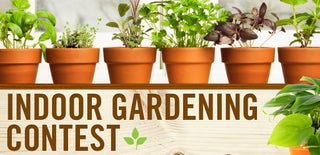Introduction: Easy Plant Press
This cheap and easy plant press is great for travel and school projects. The press is expandable, and can even press thick, juicy succulents. The press fits easily in a backpack or car.
Step 1: Materials
This plant press doesn't need much. Most of the materials can be purchased at any Wal-Mart, except perhaps books.
Materials:
knife
two or more books
plants
rubber bands
paper towels
pen
The best books are hardcover, thin, and flat. The rubber bands should be big enough to go around two books. Paper towels should not release too much lint when rubbed, as to preserve delicate plants without damage. The pen should be able to write on the paper towel.
Step 2: Proper Harvesting
Find a plant you want to sample. I used a rose bush and a dandelion flower. Look for a part that best displays the characteristics of the plant.
On the rose, I selected a part with two healthy, large leaves, a bud, and some stem. If the plant was in bloom, I would have also selected a flower. If the flower was small, I would trim about six inches down from the base of the flower, so as to get the position of the flower on a stem with leaves as well. If the flower was large, I would trim at the base, so the flower would not be obscured or sideways in the press.
With the dandelion, I trimmed along the stalk about three inches down so that the seeds would not go past the stem, and I would have something to grab onto without inciting damage.
When cutting plants, try to make the cut as clean as possible. Refrain from any unnecessary cuts, as plants can and will get infections and die.
Finally, note the location of the cutting. When you are creating plant press projects or collections, you will want to remember the location and time the plant was found. This can be useful in identifying plants at a later date, as well.
Step 3: Setting Plants in the Press
To put the plant in the press, the first step is to ensure the clipping is dry. If any water is on the plant, it can lead to mold and mildew, destroying even the best sample.
Next, lay the paper towel on one of the books. Put the plant on the towel exactly as you want it to look when it comes out of the press. This may be difficult if the plant has many leaves, as you will generally want as many leaves as possible facing up. Try to push flower heads upright as well. With thick succulents, this may be difficult, and should only be done if the plant will not be damaged. For a biology project, it may be useful to have an upside down leaf as well. This may assist in identifying ferns.
Then, place another sheet of paper towel over the plants, holding them in position with a hand. To make things easier at a later date, write location, date, and any other relevant info directly on the paper towel. This should keep samples organized, even when you have 50 to 60 in a stack.
Finally, slide another book on top. This should keep the plant the way you put it in the press, without crushing the stems too bad.
Step 4: Connecting Presses and Building Stacks
To create a finished press, simply loop two rubber bands around the two books, one at each end. If more plants are needed, place another set as built in step three on top, using the current two books as one of the books in the process. As this continues, rather large stacks can be made.
It is prudent to keep the stacks small, unless supports can hold the sides steady. Anything taller than 12 books may tip over in a vehicle, spilling plants. I speak from experience, so heed my warning!
Step 5: Removing Plants From the Press
All that remains is to put the pressed plants in their final destination. In order to finish the pressing process, at least a week is needed to let the plant dry and harden. I have removed plants early, and while they looked fine initially, after a day they began to wrinkle and warp from the remaining moisture. I typically let mine press for at least two weeks. On occasion, I can't get around to the plants for a while, and they press for six months or more. This has no adverse affect on the specimen, but can look bad if sitting in the corner of a room.
To open the press, simply pull off the rubber bands and book. Be careful, however, when opening the paper towel, as leaves get fragile in the press, and may stick to the paper and snap when jostled.
That concludes this 'ible, so good luck! Make something 'impressive', and share it!

Participated in the
Indoor Gardening Contest













